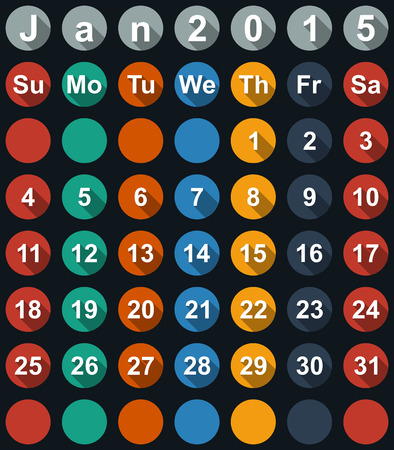1. What is Pendulum Dowsing?
Pendulum dowsing, sometimes called “pendulum divination,” is a simple yet fascinating technique used to gain insight, answer questions, or detect energy fields. At its core, this practice involves holding a weighted object (the pendulum) suspended from a chain or string and interpreting its movements as responses to specific questions.
Origins and History of Pendulum Dowsing
The roots of pendulum dowsing can be traced back centuries, with evidence of similar practices in ancient Egypt, China, and Europe. Historically, dowsing was commonly used for locating water, minerals, or lost objects. Over time, the pendulum became a popular tool for spiritual guidance and personal exploration.
| Era | Region | Usage |
|---|---|---|
| Ancient Egypt | Africa | Divination and spiritual rituals |
| Middle Ages | Europe | Finding water and minerals (dowsing rods) |
| 19th-20th Century | United States & Europe | Personal guidance and energy work (pendulums) |
Basic Concepts Behind Pendulum Dowsing
The main idea behind pendulum dowsing is that subtle energies—sometimes called vibrations or intuition—can influence the movement of the pendulum. The practitioner asks a question and observes how the pendulum swings: for example, back-and-forth might mean “yes,” while side-to-side could mean “no.” These responses are thought to reflect subconscious knowledge or connection to universal energies.
Common Uses Today
- Answering yes/no questions about daily life choices
- Checking for energy imbalances in spaces or people
- Finding lost objects or places with strong energy fields
- Exploring personal intentions or emotional states
Pendulum Dowsing in Modern American Culture
Pendulum dowsing has gained popularity in the United States as part of holistic wellness practices, alternative healing, and even self-care routines. Many Americans discover it through metaphysical shops, wellness blogs, or group workshops. While some view it as a fun spiritual experiment, others see it as a meaningful way to connect with their intuition. In mainstream culture, its common to see pendulums sold alongside crystals and tarot cards at local markets or online stores.
2. Understanding Energy: The Science and Mystery Behind Dowsing
Pendulum dowsing often sparks curiosity because it sits at the crossroads of science, spirituality, and everyday intuition. To really grasp how it works, lets explore the ideas of subtle energy, intention, and vibration—and see how believers and skeptics in the US approach these concepts.
What Is Subtle Energy?
In the world of metaphysics, “subtle energy” refers to invisible forces that flow through people and the environment. Many dowsers believe that these energies can be sensed and influenced with tools like pendulums. Think of it like tuning into a radio frequency—you cant see the waves, but you can experience their effects.
Metaphysical Perspective vs. Skeptical Viewpoint
| Perspective | Description |
|---|---|
| Metaphysical | Believes in life force energy (like “chi” or “prana”) that can be felt and guided by intention; sees pendulums as sensitive tools for tapping into this unseen field. |
| Skeptical/Scientific | Attributes pendulum movement to the “ideomotor effect,” where unconscious muscle movements cause the pendulum to swing; considers subtle energy unproven by current science. |
The Power of Intention
Your mindset matters! Many experienced dowsers in America emphasize setting clear intentions before working with a pendulum. This means focusing your thoughts on what you want to know or discover—whether its finding lost keys or making personal decisions. Even skeptics agree that intention can help organize your thoughts and make you more aware of possible answers.
Vibration and Resonance Explained Simply
Vibration is another big word in dowsing circles. Everything, from crystals to human bodies, is said to have its own unique frequency. Dowsers believe that when you ask a question, your bodys vibrations change slightly—causing the pendulum to respond in certain ways. While science doesnt officially back this up, many find that thinking about vibration helps them feel more connected to their questions and answers.
How Energy, Intention, and Vibration Work Together in Pendulum Dowsing
| Concept | Role in Dowsing | Everyday Example |
|---|---|---|
| Subtle Energy | The field youre tapping into for answers. | Feeling someones mood when you walk into a room. |
| Intention | Your mental focus that guides the process. | Making a wish before blowing out birthday candles. |
| Vibration | The way your body and tool “tune in” to questions. | A guitar string vibrating differently based on how its plucked. |
This blend of science, mystery, belief, and skepticism is what makes pendulum dowsing fascinating for so many people across America. Whether youre drawn to its mystical roots or just curious about the mind-body connection, understanding these key ideas is a great place to start your dowsing journey.

3. Choosing Your Tools: Types of Pendulums and How to Pick Yours
Pendulum dowsing starts with finding the right tool that matches your energy, intentions, and personal style. In the United States, pendulums come in many shapes and materials, each offering unique properties and appeal. Let’s break down the common types and how you can choose one that fits you best.
Popular Types of Pendulums
| Pendulum Type | Main Materials | Best For | Typical Look |
|---|---|---|---|
| Crystal Pendulums | Quartz, Amethyst, Rose Quartz, etc. | Energy work, chakra balancing, spiritual questions | Colorful, often pointed or teardrop-shaped |
| Metal Pendulums | Brass, Copper, Stainless Steel | Yes/No questions, durability, precise answers | Sleek, shiny, often bullet-shaped or round |
| Wooden Pendulums | Oak, Maple, Walnut | Earthy energy, eco-conscious users, sensitive readings | Natural look, smooth or carved designs |
| Other Materials | Ceramic, Glass, Resin | Aesthetic preference, unique energy feel | Varied colors and shapes; artistic styles |
How to Pick Your Pendulum
- Intention Matters: Think about why you want to use a pendulum. If you’re drawn to healing work or energy balancing, crystal pendulums might be your go-to. For straightforward decision-making or yes/no questions, metal pendulums are popular in the U.S. for their accuracy.
- Sensitivity and Feel: Visit a local metaphysical shop if possible and hold different pendulums. Notice which one feels “right” in your hand or seems to resonate with your energy.
- Cultural Fit: Americans often prefer tools that reflect their values—eco-friendly wood for nature lovers or modern metals for those who like a minimalist style.
- Personal Connection: Sometimes it just comes down to what catches your eye or makes you feel comfortable. Trust your gut!
- Blessing Your Tool: Once you’ve picked your pendulum, many people in the U.S. like to “cleanse” it by holding it under running water (if safe), leaving it in sunlight or moonlight for a few hours, or simply setting a positive intention before using it.
Pendulum Shopping Tips for Beginners in America
- Shop locally at metaphysical stores—staff can help guide beginners.
- If shopping online, read reviews and check photos closely.
- Avoid choosing solely on price; focus on quality and personal connection.
- If you’re gifting a pendulum, consider the recipient’s beliefs and lifestyle.
Your Pendulum Is Personal!
No matter what material you pick—crystal, metal, wood—the most important thing is that your pendulum feels meaningful to you. It’s more than just a tool; it’s a partner in your journey of self-discovery through dowsing.
4. Setting Intentions: Preparing Yourself and Your Space
Why Intentions Matter in Pendulum Dowsing
Your intention is the foundation of your pendulum dowsing experience. When you set a clear and focused intention, you guide the energy and responses you receive. Think of it as entering a conversation with the universe—what you ask and how you ask shapes what comes back to you.
Step-by-Step Guide to Clarifying Your Intention
- Identify Your Purpose: Decide what you want to know or achieve. Be specific! Instead of asking “Will I be happy?” try “Is it in my best interest to accept this job offer?”
- Phrase It Clearly: Use simple, direct language. Avoid double negatives or vague wording.
- State It Out Loud or Write It Down: This helps reinforce your focus and commitment.
| Vague Intention | Clear Intention |
|---|---|
| Will things get better? | What actions can I take this month to improve my finances? |
| Should I move? | Is moving to Austin, TX in 2024 for my highest good? |
Grounding Yourself Before Dowsing
Grounding helps keep your energy steady so your results aren’t swayed by stress, anxiety, or outside influences. Here’s a quick way to ground yourself:
- Sit comfortably with your feet flat on the floor.
- Take three slow, deep breaths—in through your nose, out through your mouth.
- Visualize roots growing from your feet into the earth, anchoring you firmly.
- If it feels right, say silently: “I am grounded and present.”
Creating a Positive Environment for Dowsing
Your space can influence your dowsing accuracy. A cluttered or chaotic environment might distract you or muddy the energy. Here are some simple tips to prepare your space:
- Tidy Up: Clear away unnecessary items from where youll be working.
- Add Uplifting Elements: Light a candle, use calming essential oils like lavender, or play soft background music if that helps you relax.
- Set Boundaries: Let others know not to disturb you while youre dowsing.
Pendulum Dowsing Preparation Checklist
| Task | Done? |
|---|---|
| Clarified intention | ▢ |
| Grounded myself | ▢ |
| Tidied up space | ▢ |
| Candle/incense/music ready (optional) | ▢ |
| No interruptions guaranteed | ▢ |
5. Practical Techniques: Getting Started and Troubleshooting
How to Hold Your Pendulum
Start by sitting comfortably at a table with your feet flat on the ground. Hold the top of the pendulum chain or string between your thumb and forefinger, letting the weight hang freely. Rest your elbow on the table to keep your hand steady, but let your wrist move naturally. The pendulum should be still before you begin asking questions.
Asking Questions the Right Way
Keep your questions simple and specific. Yes/no questions work best for pendulum dowsing. For example, ask “Is my car key in this room?” instead of “Where did I leave my car keys?” Speak clearly and stay relaxed while focusing on what you want to know.
Sample Question Table
| Type of Question | Example |
|---|---|
| Yes/No | “Is it going to rain tomorrow?” |
| Either/Or | “Should I choose option A or B?” (Ask separately for each option) |
| Location-Based | “Is my lost ring in this drawer?” |
Interpreting Pendulum Responses
Before starting, ask your pendulum to show you what a “yes” looks like (for example, swinging back and forth), then what a “no” looks like (maybe side-to-side). This helps you understand how your pendulum communicates with you. It’s normal for each person’s pendulum responses to look a little different.
| Response Type | Pendulum Movement Example | What It Means |
|---|---|---|
| Yes | Straight line front-to-back or clockwise circle | Your answer is yes |
| No | Straight line side-to-side or counterclockwise circle | Your answer is no |
| No Answer/Unclear | Little movement or erratic swinging | The question needs to be rephrased or you’re not meant to know yet. |
Troubleshooting Common Challenges
Pendulum Won’t Move?
- Relax: Take a few deep breaths and clear your mind.
- Check Your Grip: Don’t hold the chain too tightly; let it swing freely.
- Cleansing: Sometimes energy builds up; try cleansing your pendulum by holding it under running water or leaving it in moonlight overnight.
- Set Intentions: Quietly state your intention, such as “I am open to receiving clear answers.”
Pendulum Gives Confusing Answers?
- Avoid Leading Questions: Make sure you aren’t unconsciously willing the pendulum to move a certain way.
- Tired or Distracted? Take a break and come back when you feel more focused.
- Energies Interfering: Try dowsing in a different location if things feel off.
Troubleshooting Table: Quick Fixes for Beginners
| Problem | Possible Cause | Solution |
|---|---|---|
| No movement at all | Nerves, tight grip, blocked energy | Breathe deeply, relax grip, cleanse pendulum |
| Muddled/erratic swings | Poorly worded question, distractions around you, tiredness | Simplify question, find quiet space, rest before trying again |
| Pendulum always gives same answer | Lack of calibration, overthinking | Recalibrate by asking for “yes” and “no” movements before each session |
Dowsing with a pendulum is a skill that gets easier with patience and practice. If things don’t work right away, don’t worry—just take your time, try these tips, and remember that everyone learns at their own pace.


